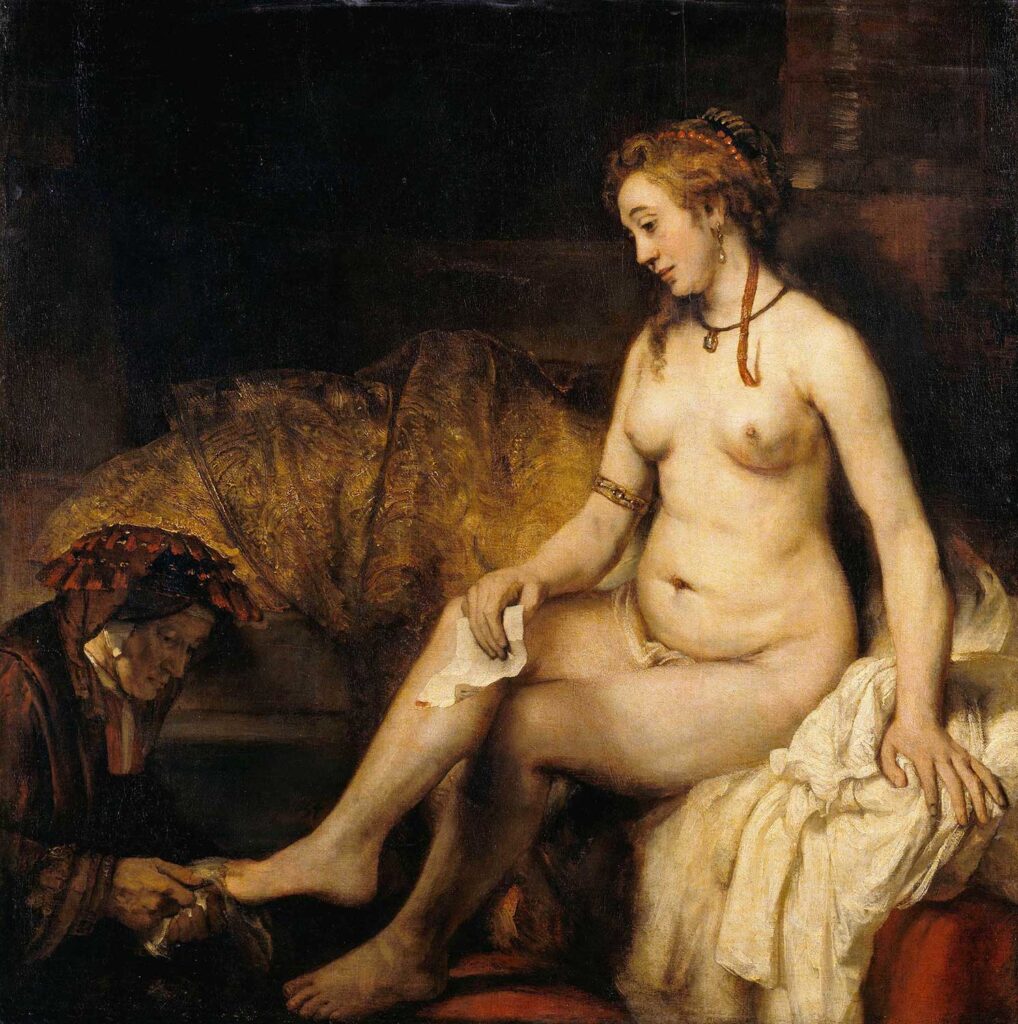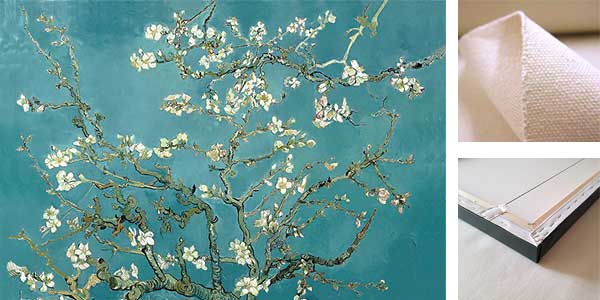Bathsheba with King David’s Letter by Rembrandt van Rijn was created in 1654. The painting is in Musee du Louvre Paris. The size of the work 142 x 142 cm and is made of oil on canvas.
Subject taken from the Bible (II Book of Samuel, XI, 4): David – paradoxically absent from this painting – sees from his palace Bathsheba, the wife of his general Uriah, bathing and asks for her by a messenger, from where the importance of the letter delivered to Bathsheba, the strong point of a whole iconographic renewal of the theme, dear to the Nordics of the 17th century. (Rubens, Lievens, Bronckhorst, Drost, see R.F. 1349, cf. Sluijter, p. 340-352). The interpretation of Jean Cailleux (1945 then 1969), Bathsabée receiving a letter announcing the death of Urie to him sent expressly to the war by David, and regretting having cheated on her husband with David, seems adventurous (no second message in the Bible; iconographic tradition of the bath of Bathsheba). Read more in Musee du Louvre (fr).
About the Artist
Dutch Golden Age painter, printmaker and draughtsman Rembrandt was born on 15 July 1606 in Leiden, in the Dutch Republic, now the Netherlands. As a boy, he attended a Latin school. At the age of 13, he was enrolled at the University of Leiden, although according to a contemporary he had a greater inclination towards painting. In 1624 or 1625, Rembrandt opened a studio in Leiden, which he shared with friend and colleague Jan Lievens. In 1627, Rembrandt began to accept students, which included Gerrit Dou in 1628 and Isaac de Jouderville.
At the end of 1631, Rembrandt moved to Amsterdam, a city rapidly expanding as the business and trade capital. He began to practice as a professional portraitist for the first time, with great success. He initially stayed with an art dealer, Hendrick van Uylenburgh, and in 1634, married Hendrick’s cousin, Saskia van Uylenburgh. Throughout his career, Rembrandt took as his primary subjects the themes of portraiture, landscape and narrative painting. For the last, he was especially praised by his contemporaries, who extolled him as a masterly interpreter of biblical stories for his skill in representing emotions and attention to detail… Read more
Order a reproduction of this work (printed on canvas)

